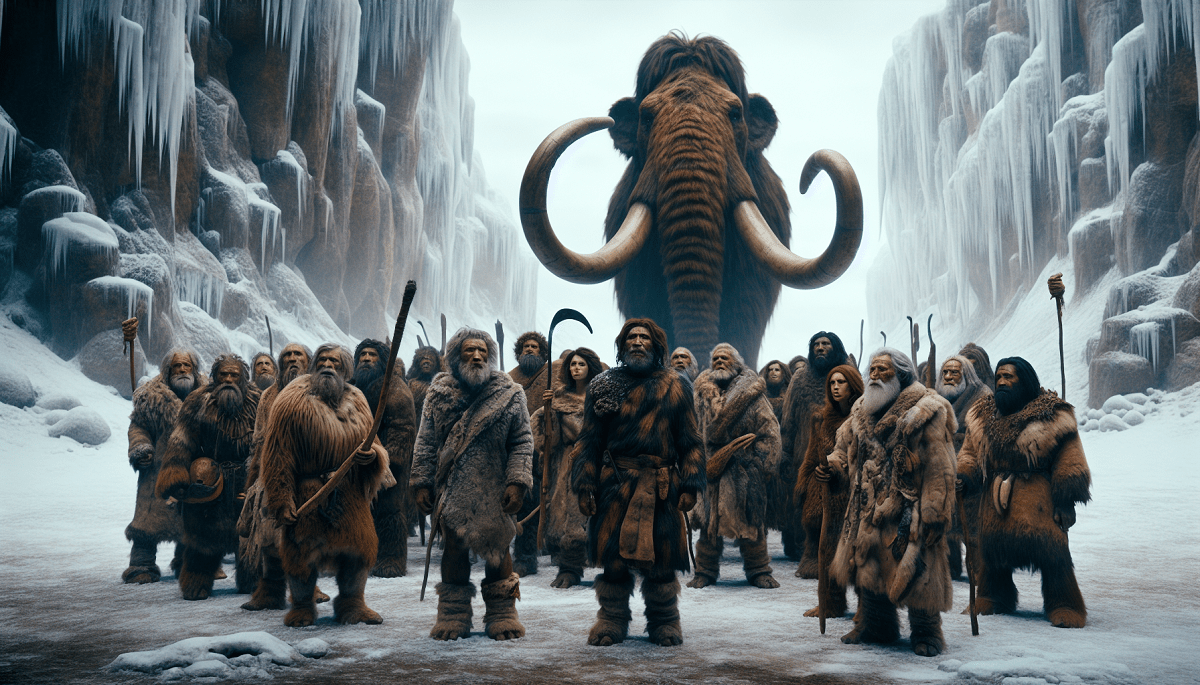In an extraordinary revelation that pushes the boundaries of our understanding, recent DNA analysis from bones discovered in a cave in Germany offers compelling evidence that modern humans, Homo sapiens, had already established themselves in northern Europe around 45,000 years ago. This groundbreaking discovery not only rewrites the timeline of human migration and settlement but also introduces new complexities into the story of our species and its coexistence with Neanderthals during the last Ice Age. Let’s embark on a journey through time to uncover the implications of these findings and explore how they shape our understanding of human history.
Unveiling the Past: The German Cave Discovery
In the depths of a cave in Germany, scientists made a fascinating discovery that would challenge previous conceptions about the timeline of human history in Europe. The cave, a silent witness to the eons, yielded bones that, upon DNA analysis, were identified as belonging to Homo sapiens. This evidence firmly establishes the presence of modern humans in northern Europe significantly earlier than previously thought, amidst frigid Ice Age conditions.
The Significance of the Discovery
- Rewriting History: The finding shifts the timeline of human migration into Europe, suggesting that Homo sapiens ventured into the continent and adapted to its harsh climates much earlier than we had imagined.
- Survival Against the Odds: The ability of these early humans to endure the extreme cold challenges our understanding of their resilience and adaptability.
The Coexistence with Neanderthals
The narrative of Homo sapiens in Europe is intricately linked with that of the Neanderthals, our closest extinct human relative. For decades, the nature of the interactions between our species and Neanderthals has been a subject of much speculation and research. The recent discoveries shed light on this mystery, indicating that modern humans and Neanderthals may have overlapped in regions now known as France and Spain for approximately 1,400 to 2,900 years.
The Overlapping Epoch
- A Prolonged Interaction: The extended period of coexistence implies that the interactions between Homo sapiens and Neanderthals were not fleeting but possibly involved significant cultural and genetic exchange.
- The Complexity of Replacement: This overlap period challenges simplistic narratives of a swift and complete replacement of Neanderthals by modern humans, suggesting instead a more nuanced process involving coexistence and interaction.
The Great Transition: From Diversity to Dominance
The period between 50,000 and 40,000 years ago marks a monumental transition in the history of human evolution. According to Jean-Jacques Hublin, a leading figure in paleoanthropology, this epoch was not merely a chapter of geographical expansion but a time of profound biological and cultural shifts.
The Singular Survivor
- The End of an Era: For millions of years, multiple hominin species coexisted on the planet. The transition to a world dominated by a single species, Homo sapiens, signifies one of the most dramatic shifts in planetary biodiversity.
- The Path to Dominance: The replacement of all archaic humans by Homo sapiens in Eurasia reflects the remarkable adaptability and versatility of our species.
The Role of Climate and Technology
To understand how Homo sapiens managed to thrive in diverse and often hostile environments, we must consider the roles of climate change and technological innovation.
Adapting to the Ice Age
- Innovative Survival Strategies: Evidence suggests that the early Europeans developed sophisticated tools and clothing to cope with the cold, leveraging their cognitive abilities to adapt to their environment.
- Migratory Patterns: Climate fluctuations likely influenced the migratory routes and settlement patterns of early humans, pushing them into new territories in search of resources.
Neanderthals and Humans: A Shared World
- Cultural Exchange: The overlap between Homo sapiens and Neanderthals could have facilitated the exchange of knowledge and techniques, enriching the cultural landscape of prehistoric Europe.
- Genetic Legacy: Modern humans carry a small percentage of Neanderthal DNA, a testament to the interactions between the two species. This genetic inheritance has implications for our understanding of human biology and disease.
Conclusion: Piecing Together Our Past
The discovery of Homo sapiens’ early presence in northern Europe and their prolonged coexistence with Neanderthals opens new windows into our past. These revelations challenge us to rethink our narratives of human evolution and the journey of our species across continents. As we unravel the complex tapestry of human history through the lens of modern science, we gain not only insights into our origins but also a deeper appreciation for the resilience and ingenuity that have characterized Homo sapiens through the ages.
In weaving together the strands of genetics, archaeology, and anthropology, we continue to piece together the puzzle of our shared human heritage. The story of Homo sapiens is far from complete, but with each discovery, we come closer to understanding the myriad paths that led us to become the singular inhabitants of our diverse and changing planet.


